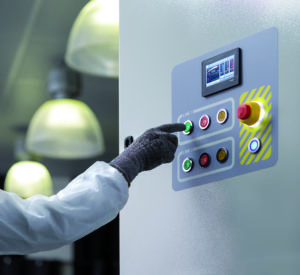The Roaring Twenties are back.
I’m not talking about a resurgence in flappers and jazz. I believe we can expect a revolution in energy in the coming years reminiscent of the electricity boom of the 1920s.
Consider this: The way we create, distribute, and consume energy is surprisingly similar to the way it was a century prior. As Aamir Paul, Schneider Electric Country President, U.S., likes to point out, our grid is so old, even Thomas Edison would recognize it.
But the tide is turning. Today, conversations around climate change, renewable energy, and responsible energy consumption are happening on the ground and in the boardroom. Recent wildfires in California, tornadoes in Tennessee, and the spread of COVID-19 around the world are playing a large role in these discussions. And these conversations are prompting a focus on decarbonization, decentralization, and digitalization to enhance energy reliability and efficiency.
In this post, I explore these three energy megatrends and discuss how microgrids are the logical solution to usher in this new energy era.
Where we’re going: decarbonization, decentralization, digitalization
Decarbonization
Decarbonization, the reduction of greenhouse gas emissions, is the first energy megatrend we expect to see over the next decade.
According to the U.S. Energy Information Administration, fossil fuels and nuclear energy generate 82 percent of our electricity. But this rate is rapidly declining. The Annual Energy Outlook 2020 reports that renewables are the fastest-growing source of electricity generation in the U.S. In contrast, we expect a decline in U.S. coal-fired and nuclear electricity generation through the 2020s and beyond.
Why is this happening? People, companies, and governments are committing to carbon neutrality because they see climate change as the defining challenge of our time. Also, renewable energy generation is now cost-competitive and more accessible than ever before.
Decentralization
Second, those concerned with energy reliability, such as business owners, local governments in disaster-prone regions, and critical facility managers are now seeking control over their energy. This shift is leading to decentralization: a revolution in how we generate, store, move, and consume energy.
Electricity isn’t just a convenience anymore; it’s a necessity. So, when power is disrupted along the main grid, everyone is impacted. Outages of any length are costly and disruptive. Although most power utilities define a power outage as five or more minutes with zero current, even a second-long voltage disruption can shut down manufacturing lines, sensitive electronic devices, and electrical power systems. We all saw the impacts of long-term outages in California: facilities, businesses, and homeowners suffered. Unfortunately, climate change, aging infrastructure, and rising populations will only continue to add pressure to utilities.
To ensure a continuous power supply, communities, businesses, and even homeowners are now investing in technologies such as wind and solar power and batteries, which enable localized on-site energy generation, storage, and consumption.
Digitization
One last energy megatrend, digitization, uses data to enable flexible decision-making for energy production, consumption, and management.
When power generation equipment becomes intelligent with software that analyzes and responds to data in real-time, it can result in more efficient operations. For example, by looking at data from a commercial building with a photovoltaic system, a facility manager can determine whether it makes sense to store some of the excess energy on-site using a backup battery or sell it back to the utility.
Emerging digital technologies enable more efficient, reliable, and sustainable operations. And, as more devices enter our lives, the potential for better, more actionable data only increases.
Microgrids as the future of energy management
Microgrids are a logical energy management solution for decarbonization, decentralization, and digitalization.
What are microgrids? They are localized energy production and distribution networks that either operate on their own or supply energy directly to the main grid. Most often, microgrids connect to the main grid. They can also “island,” or operate independently from the grid, in cases such as extreme weather, damage to the main grid, etc.
Electricity in a microgrid is generated from renewable energy sources such as solar and wind and excess energy can be stored in a battery energy storage system. Using renewable energy sources inherently reduces your carbon footprint from energy, following the decarbonization trend.
Microgrids are inherently decentralized, meaning they create, store, and distribute energy locally. When the main grid goes down, energy generated on-site is available immediately. This reduces disruptions and the financial burden of a prolonged outage.
Finally, because of digitization, microgrids are a flexible and efficient energy solution. Connected products allow a microgrid owner to feed energy to the main grid or island. Digital controls can also optimize energy production.
Overall, microgrids are helping society achieve a decarbonized, decentralized, digitized energy future.
Join me in this microgrid journey
Throughout the year, I’ll use this blog to explore why and how you can use microgrids to manage energy.
In the meantime, if you’re looking to take a deeper dive into how microgrids work, take a look at this video: EcoStruxure Microgrids.




Conversation
What a great blog to inform us about energy management. Very interested in your content. Thanks.